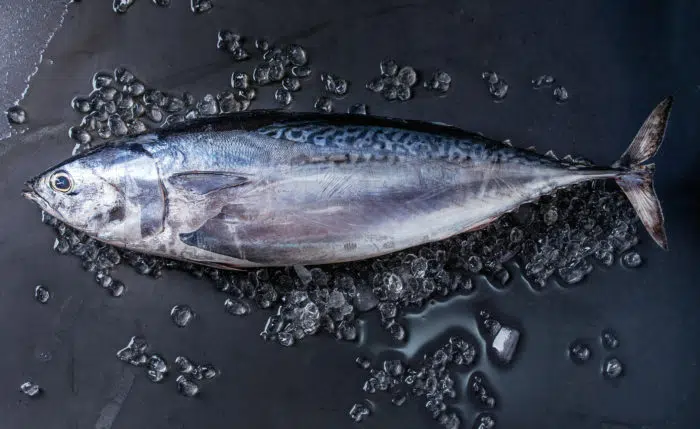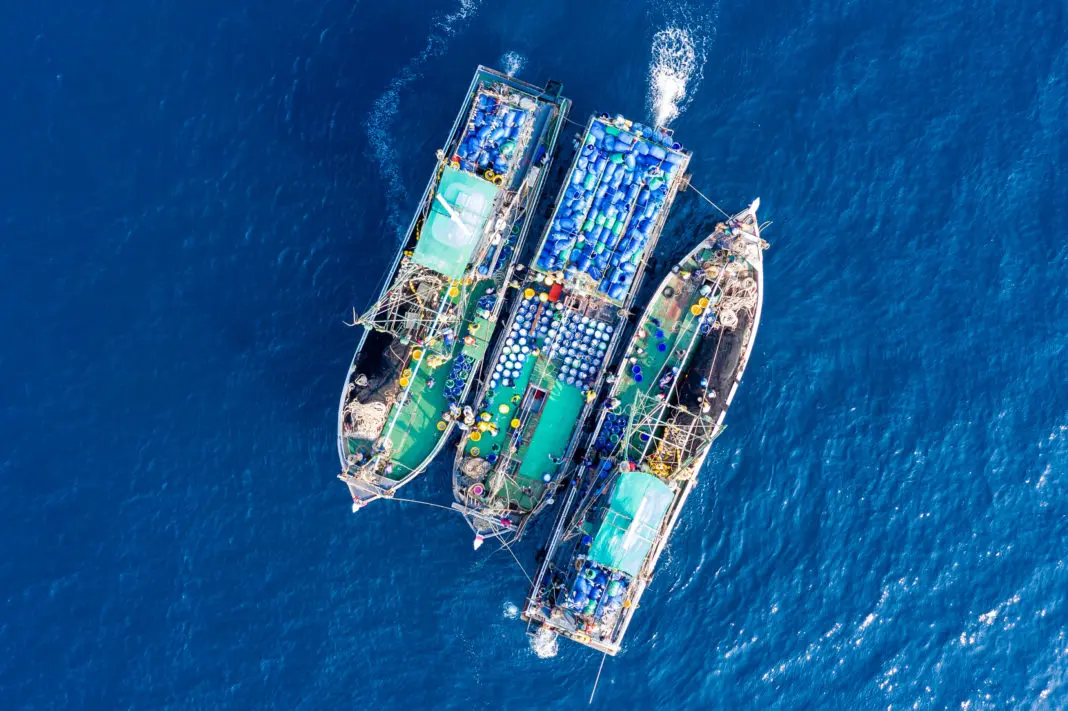There is a new environmental documentary that has hit our screens this week from Netflix: Seaspiracy. It’s gaining huge traction — and controversy — worldwide as it makes it into the Top Ten lists of dozens of countries.
The film is slickly produced and it exposes the various environmental impacts of pollution and overfishing on marine life as well as human rights injustices in the fishing industry. It also includes shocking accounts of animal abuse, environmental destruction, and even murder while exploring slave labor in seafood production facilities.
It is truly shocking and horrifying to watch — even more so as a lifelong diver who is passionate about protecting the oceans.
Directed and presented by 27-year-old filmmaker Ali Tabrizi, the film presents a number of statistics highlight how the fishing industries have a huge impact on the level of pollution in our oceans. Tabrizi takes us from Japan to France to Scandinavia to Africa, uncovering the ways in which humans drain resources from our planet’s oceans.
There’s so much to learn from the documentary — and it’s such an important watch for anyone who cares about marine life, the ocean, or human rights.
However, it is also drawing a lot of criticism from experts in sustainable fishing practices because its portrayal of the issues is in simplistic terms that fail to fully explore how complex these problems can be.
5 Key Takeaways From Seaspiracy
Fishing nets are the largest contributor to ocean plastic
We’ve all heard the huge campaigns against single-use plastic and the terrible impact it has on our oceans. However, what Seaspiracy highlights is that 46 percent of the waste floating in the “The Great Pacific Garbage Patch” — a gyre of marine debris in the central North Pacific Ocean that is often discussed when talking ocean plastic — comes from discarded fishing nets. This compares to an estimated 0.03 percent of plastic pollution waste that comes from straws.
‘Bycatch’ is a huge issue
A huge problem in the fishing industry discussed in the film comes from catching and accidentally killing marine animals that are not targeted fish, like sea turtles or dolphins. The by-products of these accidental catches can be sold to restaurants as seafood products but provide little revenue when compared to what was spent on equipment used during bycatch-related events such as shrimp trawling.
Shocking statistics shown in the film suggest that 50 million sharks (out of the 100 million killed each year) are caught annually as bycatch, while up to 10,000 dolphins are caught off the Atlantic coast of France every year alone as bycatch, according to Sea Shepherd.
Are sustainable fish certifications actually worth anything?
Organizations like Earth Island Institute — the organization that manages the “Dolphin Safe” labeling — and Marine Stewardship Council come under intense criticism in the film as Tabrizi shines a light on how the “Dolphin Safe” and the MSC labels might not be able to provide the assurance that customers are looking for.
When asked if he could guarantee that every can of fish labeled “Dolphin Safe” is actually dolphin-safe, Mark Palmer from the Earth Island Institute said:
“Nope. Nobody can. Once you’re out there in the ocean, how do you know what they’re doing? We have observers onboard; observers can be bribed.”
Farmed fish isn’t the answer either
A common perception by the public is farmed fish are more sustainable than fish taken from wild populations. But what you might not know is that often these farmed fish are fed wild-caught fish, leading one expert in the documentary to call fish farming “wild fishing in disguise.” Other problems include lice infestations in salmon farms, and millions are dying every year from diseases such as anemia and heart disease due to what their once healthy lives have turned into on these farms.
Slave labor is rife in the fishing industry
We also hear about horrifying reports of slave labor being used in Thailand as part of the shrimp and prawn fishing industry. One former fisherman interviewed in the documentary described how he was abused and threatened at gunpoint, alleging that the dead bodies of others who were killed were kept in freezers onboard their ship.

What do the experts say?
The film interviewed a number of figures from the marine conservation organization Sea Shepherd, famed ocean protector and diver Sylvia Earle, journalist and environmentalist George Monbiot, and environmental scientist Christina Hicks.
It all comes together in a very dramatic way and has sparked a huge global conversation on the issues highlighted, which is fantastic.
However, some experts said that while Seaspiracy carries an important message, it is lost amid “staged” scenes and out-of-context interviews.
Bryce Stewart, marine ecologist and fisheries biologist who lectures at the University of York, said in a Twitter thread:
“Does [Seaspiracy] highlight a number of shocking and important issues? Absolutely. But is it misleading at the same time? Yes, from the first few minutes onwards.
“It regularly exaggerates and makes links where there aren’t any. Many of the scenes were clearly staged and I know at least one of the interviewees was taken out of context.
“Other ‘set ups’ made no sense – how can the marine life off the west coast of Africa be so abundant and so overfished (a real issue there) at the same time?
“This is the worst kind of journalism. People will either believe it and completely overreact, or find it so easy to discredit some of the statements that the real issues get downgraded or disbelieved. In that way, I feel this film does more harm than good.
“On the flip side, it was good to highlight misconceptions about issues like the threat of plastic straws relative to many other factors. But where was climate change? I must have blinked and missed that. Please can we see a much more scientific and balanced film next time.”
#Thread Finally had a chance to watch #Seaspiracy Does it highlight a number of shocking & important issues? Absolutely. But is it misleading at the same time? Yes, from the first few minutes onwards. It regularly exaggerates & makes links where there aren't any 1/- pic.twitter.com/3Ggb3a3Jls
— Bryce Stewart (@BD_Stew) March 27, 2021
The Marine Stewardship Council, which was featured in the film, also responded to claims in the documentary that alleged sustainable fishing is not possible:
“This is wrong. One of the amazing things about our oceans is that fish stocks can recover and replenish if they are managed carefully for the long-term.”
“Examples of there this has happened and stocks have come back from the brink include the Patagonian tooth fish in the Southern Oceans or the recovery of Namibian hake, after years of overfishing by foreign fleets, of the increase in some of our major tuna stocks globally.”
Sustainable fishing does exist and helps protect our oceans.
Our Seaspiracy response: https://t.co/co7cw0dif0 pic.twitter.com/ux0zqn65dx
— Marine Stewardship Council (@MSCecolabel) March 26, 2021
One of the experts who appeared in the documentary, environmental studies scientist Christina Hicks, has since tweeted her discomfort about her appearance, claiming she was not aware of the subject of the documentary.
“Unnerving to discover your cameo in a film slamming an industry you love and have committed your career to. I’ve a lot to say about Seaspiracy but won’t.”
“Yes there are issues but also progress and fish remain critical to food and nutrition security in many vulnerable geographies.”
Unnerving to discover your cameo in a film slamming an industry you love & have committed your career to. I’ve alot to say about #seaspiracy– but won’t. Yes there are issues but also progress & fish remain critical to food & nutrition security in many vulnerable geographies. pic.twitter.com/gKlopL64Gt
— Christina Hicks (@ChristinacHicks) March 26, 2021
Journalist and environmentalist George Monbiot, meanwhile, tweeted:
“I watched Seaspiracy on Netflix last night. It’s a brilliant expose of the greatest threat to marine life: fishing.”
1. I watched #Seaspiracy on Netflix last night. It’s a brilliant expose of the greatest threat to marine life: fishing.
This thread explores why we have so seldom heard the the truth about what’s happening to our oceans.#TellTheTruth @GretaThunberg https://t.co/rSEb3aGcKZ— George Monbiot (@GeorgeMonbiot) March 26, 2021
Others on Twitter also commented about feeling uncomfortable with the “white savior” undertones they felt were present in the documentary.
The core issue most people we’ve talked to found with the film is while it is pursuing an important topic of discussion and has done wonders to elevate the discussion in the public consciousness, it has done so in a sensational one-dimensional way.
Following heavily armed men as they apprehend a trawler full of lawbreakers certainly combats the more boring talking-head format of too many documentaries, but the facts of the case are ultimately far more convincing.
It is also becoming clear that many of the interviews conducted with experts were not done with full clarity of how or why they were being asked to contribute to the film.
In a number of discussions on the Clubhouse audio social network, we’ve heard from people interviewed in the film saying that the line of questioning the filmmakers pursued meant they gave answers that helped fit the narrative Tabrizi was trying to construct without making it clear that is why those questions were being asked.
It’s a shame and makes a lot of people passionate about the oceans conflicted about the film as on the one hand it has highlighted issues that until now have been on the fringes of the public consciousness. On the other hand, it forced a narrative on people that is far more multi-layered and nuanced than it comes across in the documentary.

Does this all mean we should give up fish?
Some of the staggering facts coming from the film are hard to ignore — like the estimate that we’re now catching up to 2.7 trillion fish a year, the equivalent to 5 million fish every minute — and means that we need to seriously consider our consumption of fish and other seafood.
The conclusion of the film is we can’t do sustainable fishing so the only thing we can do as consumers is to stop consuming fish.
As divers, we are more than likely to hear and adopt the message the film gives as diving tends to be a non-essential, aspirational activity that we can pursue as a recreation. This means we can take decisions to cut out certain types of food with minimal impact on our lives.
The rise of efforts such as Veganuary or Fish-Free February has become popular amongst large numbers of our diving communities. I certainly have quite a few friends in the diving industry who have refused to eat fish for years because “we don’t touch fish underwater so why should we eat them.”
However, that is because so many of us come from a position of global privilege and can afford to give up whole food groups.
What about the approximately 3 billion people in the world who rely on wild-caught and farmed seafood as a primary source of protein? They don’t have the option to choose to give up eating fish and have no access to other sources of protein.
This is where films like Seaspiracy cause friction with those who have been working for years trying to solve the problem.
I’ve heard multiple sustainable fishing experts this week sound appalled at the effect the film is having on people’s opinions. They feel there is now a public assault on their efforts to find ways to address big issues but in a complex environment globally.
Ultimately I think the film has done a fantastic job of opening people’s eyes to the horrors of the commercial fishing industry and how we are raping our oceans on a daily basis… but let’s all decided the best course of action by getting informed of what is good to do. We all need to decide what we want to do as consumers and inhabitants of this planet.
Will I be eating much less fish on the back of Seaspiracy? Absolutely.
However, I’ll also be researching and supporting organizations that are aiming to tackle the issue of sustainable fishing. You should too.

